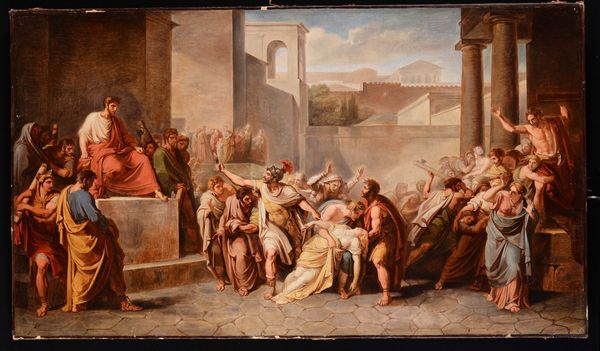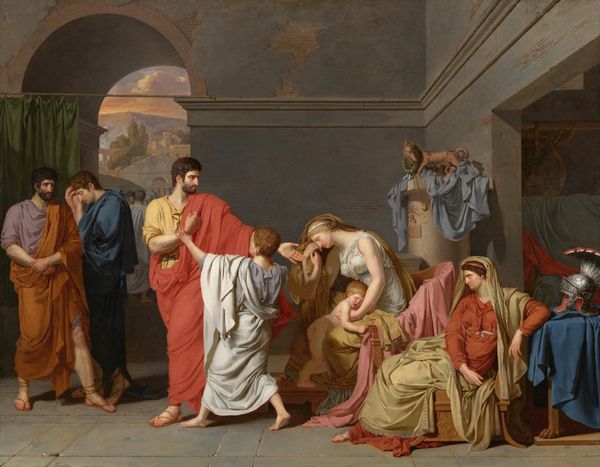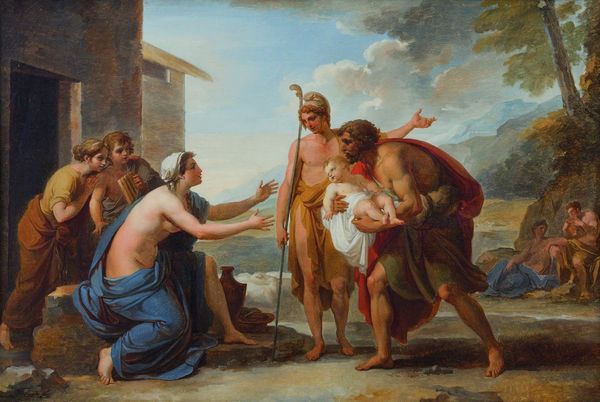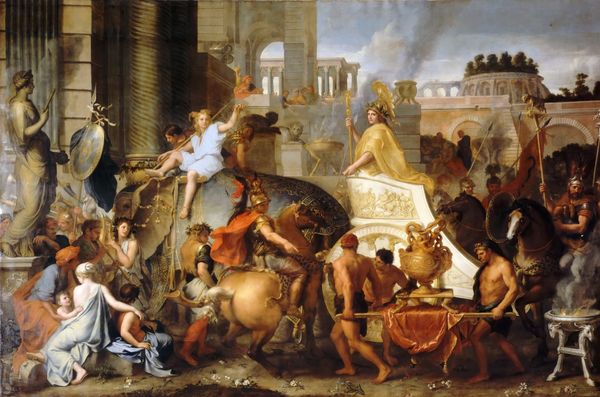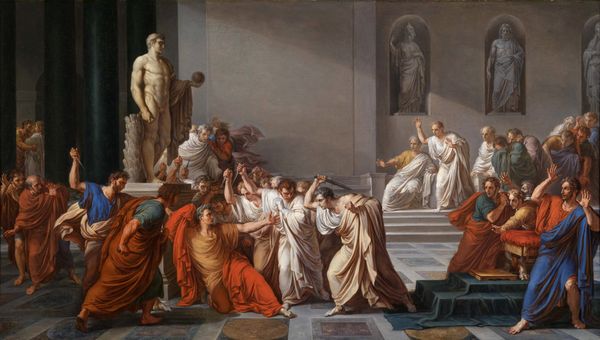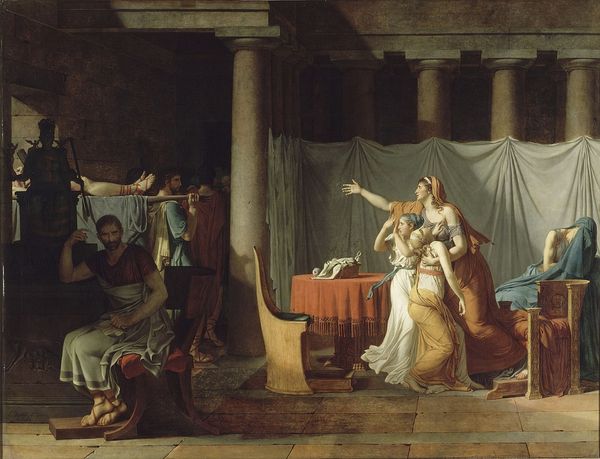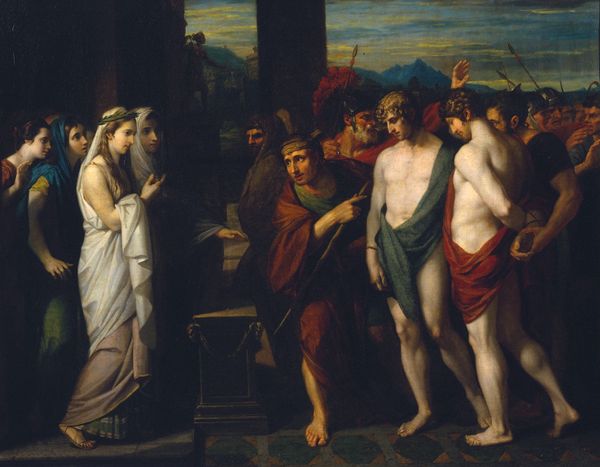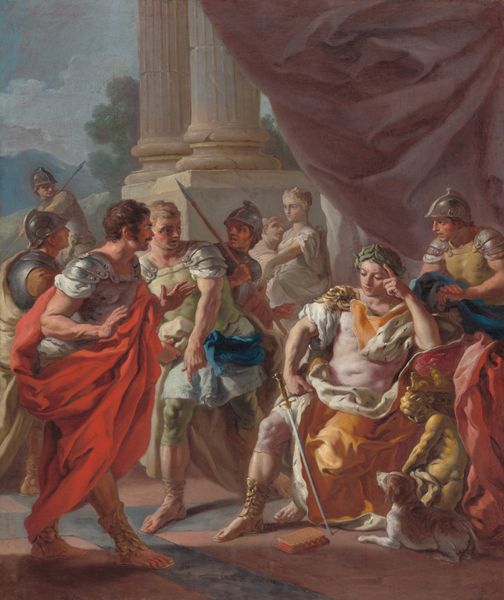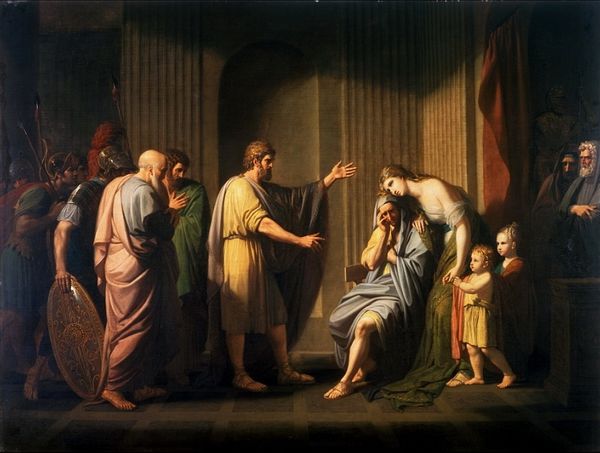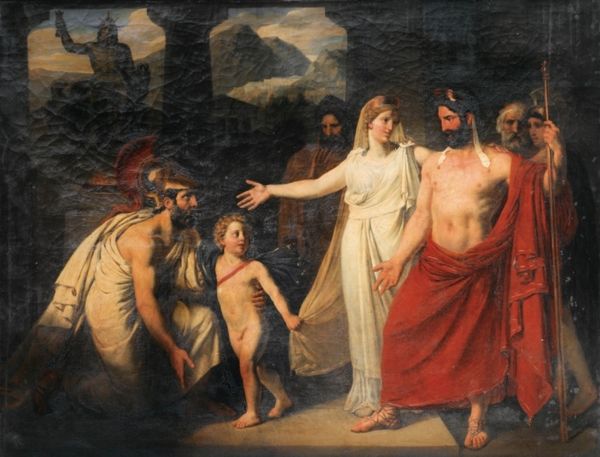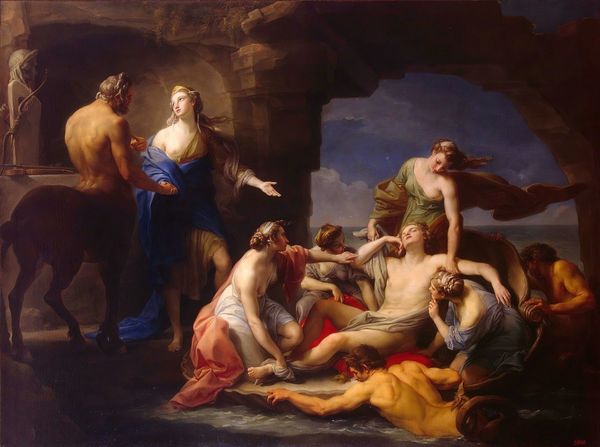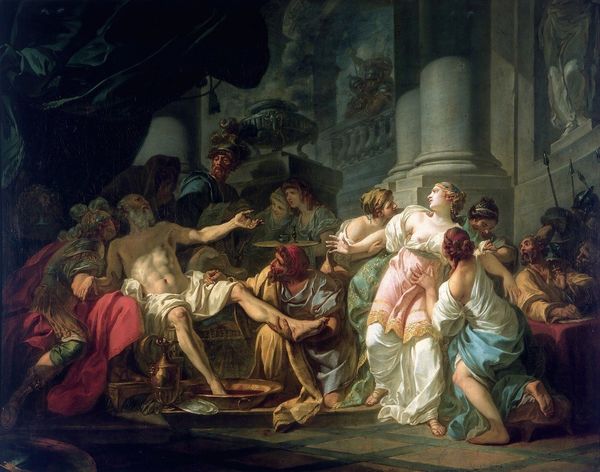
painting, oil-paint
#
portrait
#
neoclacissism
#
allegory
#
painting
#
oil-paint
#
classical-realism
#
oil painting
#
underpainting
#
history-painting
#
academic-art
#
italian-renaissance
#
italy
#
portrait art
Dimensions: 105 x 179 cm
Copyright: Public domain
Curator: Here we have Vincenzo Camuccini’s "Scipio's Moderation," executed in 1811. The setting seems rife with tension. What is your initial read? Editor: It feels like a staged drama, carefully composed, with clear diagonals and groupings, a somber palette punctuated by strategically placed blues and yellows. The scene evokes the solemnity of a classical tableau vivant. Curator: Precisely. Camuccini, deeply rooted in Neoclassicism, looked back to antiquity and Renaissance masters like Raphael. Observe the carefully constructed composition. Every gesture, every fold of drapery serves the narrative. The central figure of Scipio embodies restraint, even as he commands a powerful position, physically and morally. Editor: Indeed, we can observe this Roman general as a magnanimous conqueror who declines the spoils of victory, here embodied by the presentation of a captive bride. This was painted during the Napoleonic era, and that setting surely resonated. But there is something so bloodless, isn't there, so lacking in dynamism. The artist’s employment of history functions as commentary on political leadership in early 19th-century Europe. How do you view the use of art for political messages at the time? Curator: It is fascinating how artists appropriated historical and mythological narratives to address contemporary issues. But for me, I keep coming back to how the geometric rigidity underpins all those gestures that are designed to appear human. The emotional core seems buried beneath layers of calculation and symbolic form. There is a sort of hyper-deliberateness to every figure. Editor: That’s right. There’s the symbolic aspect, of course—the artist painting a picture of moral leadership against the backdrop of a specific time in the continent’s political history. The setting seems designed to imbue the scene with timelessness. And it makes me wonder to whom was this moderation meant to appeal, exactly. It is not an anti-war painting, but rather about who is worthy to govern and take spoils of war. Curator: Yes, perhaps we're left with the chilling observation that moderation is merely another instrument in the art of governance. The artist leaves that hanging in the composition so pregnant with a sense of duty and political vision. Editor: A valuable moment to witness that artistic interplay with power dynamics through history. It gives a deeper sense of the relationship between social ideas and forms, don’t you agree?
Comments
No comments
Be the first to comment and join the conversation on the ultimate creative platform.
